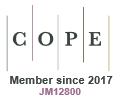Just Accepted
This article has been peer reviewed and accepted for publication. It is in production and has not been edited, so may differ from the final published form.
Seasonal dynamics of abundance and biomass of cyanobacteria in the periphyton and epilithon in Karantinnaya Bay (northern Black Sea) in relation to physicochemical factors of the environment
Abstract
Context. The influence of environmental factors on the quantitative characteristics and structure of cyanobacterial communities within marine microbial mats remains understudied. Aims. A comparative analysis of the community structure and seasonal dynamics of quantitative parameters of cyanobacteria in periphyton and epilithon in Karantinnaya Bay in the Black Sea, linking them to the environmental factors. Methods. The total number and biomass of cyanobacteria were quantified on the basis of established methods for the benthic cyanobacteria. Results. The abundance and biomass of cyanobacteria were (0.38–4.20) million cells cm-2 in periphyton and (0.004–0.158) million cells cm-2 in epilithon; (0.0035–0.160) mg cm-2 in periphyton and (0.00002–0.004) mg cm-2 in epilithon. Maximum values were recorded in November for periphyton and August for epilithon; minimum values were recorded in March. Thin filamentous cyanobacteria are more responsible for changes in abundance, and biomass is determined by thick filamentous species, and in their absence, by unicellular cyanobacteria. Conclusions. Cyanobacterial communities in periphyton and epilithon differed in density, seasonal dynamics, dominant species composition and response to the nutrient contents. Nitrogen, phosphorus and their ratio at optimal pH were most important for cyanobacteria, but the requirements for certain nutrients varied between biotopes.
MF24202 Accepted 16 April 2025
© CSIRO 2025



